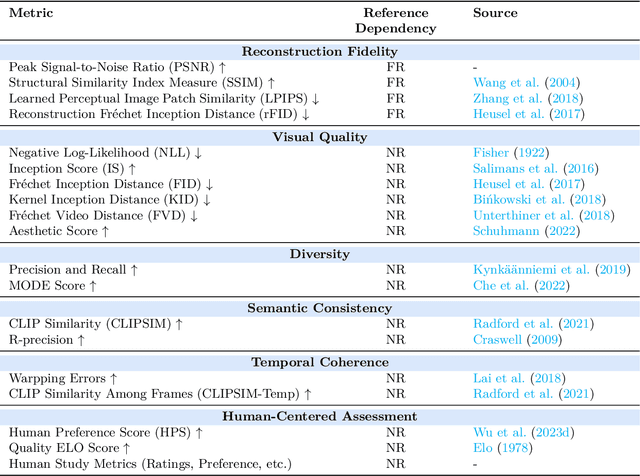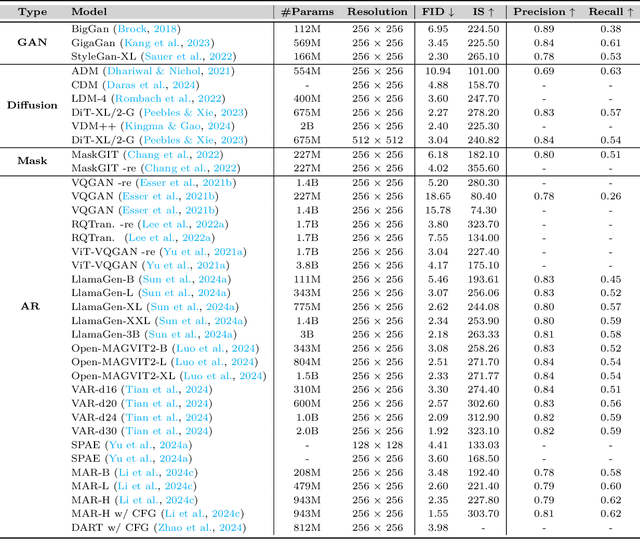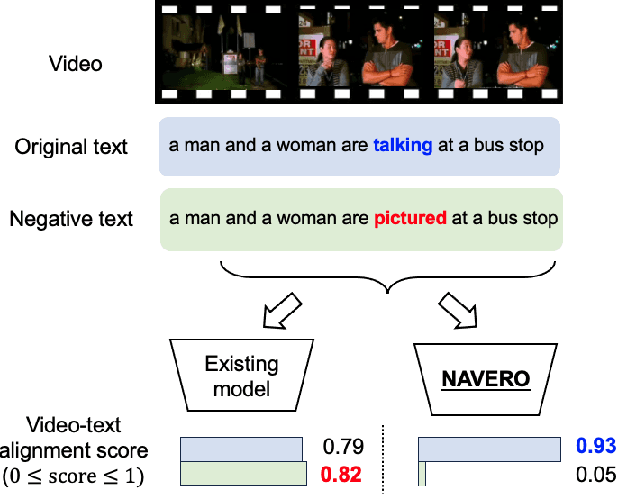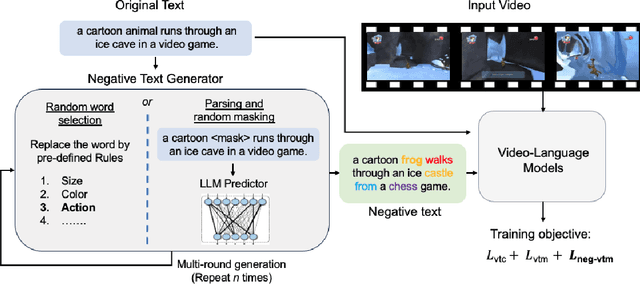Chaofan Tao
A1: Asynchronous Test-Time Scaling via Conformal Prediction
Sep 18, 2025Abstract:Large language models (LLMs) benefit from test-time scaling, but existing methods face significant challenges, including severe synchronization overhead, memory bottlenecks, and latency, especially during speculative decoding with long reasoning chains. We introduce A1 (Asynchronous Test-Time Scaling), a statistically guaranteed adaptive inference framework that addresses these challenges. A1 refines arithmetic intensity to identify synchronization as the dominant bottleneck, proposes an online calibration strategy to enable asynchronous inference, and designs a three-stage rejection sampling pipeline that supports both sequential and parallel scaling. Through experiments on the MATH, AMC23, AIME24, and AIME25 datasets, across various draft-target model families, we demonstrate that A1 achieves a remarkable 56.7x speedup in test-time scaling and a 4.14x improvement in throughput, all while maintaining accurate rejection-rate control, reducing latency and memory overhead, and no accuracy loss compared to using target model scaling alone. These results position A1 as an efficient and principled solution for scalable LLM inference. We have released the code at https://github.com/menik1126/asynchronous-test-time-scaling.
LongEmotion: Measuring Emotional Intelligence of Large Language Models in Long-Context Interaction
Sep 09, 2025Abstract:Large language models (LLMs) make significant progress in Emotional Intelligence (EI) and long-context understanding. However, existing benchmarks tend to overlook certain aspects of EI in long-context scenarios, especially under realistic, practical settings where interactions are lengthy, diverse, and often noisy. To move towards such realistic settings, we present LongEmotion, a benchmark specifically designed for long-context EI tasks. It covers a diverse set of tasks, including Emotion Classification, Emotion Detection, Emotion QA, Emotion Conversation, Emotion Summary, and Emotion Expression. On average, the input length for these tasks reaches 8,777 tokens, with long-form generation required for Emotion Expression. To enhance performance under realistic constraints, we incorporate Retrieval-Augmented Generation (RAG) and Collaborative Emotional Modeling (CoEM), and compare them with standard prompt-based methods. Unlike conventional approaches, our RAG method leverages both the conversation context and the large language model itself as retrieval sources, avoiding reliance on external knowledge bases. The CoEM method further improves performance by decomposing the task into five stages, integrating both retrieval augmentation and limited knowledge injection. Experimental results show that both RAG and CoEM consistently enhance EI-related performance across most long-context tasks, advancing LLMs toward more practical and real-world EI applications. Furthermore, we conducted a comparative case study experiment on the GPT series to demonstrate the differences among various models in terms of EI. Code is available on GitHub at https://github.com/LongEmotion/LongEmotion, and the project page can be found at https://longemotion.github.io/.
The Synergy Dilemma of Long-CoT SFT and RL: Investigating Post-Training Techniques for Reasoning VLMs
Jul 10, 2025Abstract:Large vision-language models (VLMs) increasingly adopt post-training techniques such as long chain-of-thought (CoT) supervised fine-tuning (SFT) and reinforcement learning (RL) to elicit sophisticated reasoning. While these methods exhibit synergy in language-only models, their joint effectiveness in VLMs remains uncertain. We present a systematic investigation into the distinct roles and interplay of long-CoT SFT and RL across multiple multimodal reasoning benchmarks. We find that SFT improves performance on difficult questions by in-depth, structured reasoning, but introduces verbosity and degrades performance on simpler ones. In contrast, RL promotes generalization and brevity, yielding consistent improvements across all difficulty levels, though the improvements on the hardest questions are less prominent compared to SFT. Surprisingly, combining them through two-staged, interleaved, or progressive training strategies, as well as data mixing and model merging, all fails to produce additive benefits, instead leading to trade-offs in accuracy, reasoning style, and response length. This ``synergy dilemma'' highlights the need for more seamless and adaptive approaches to unlock the full potential of combined post-training techniques for reasoning VLMs.
SwingArena: Competitive Programming Arena for Long-context GitHub Issue Solving
May 29, 2025Abstract:We present SwingArena, a competitive evaluation framework for Large Language Models (LLMs) that closely mirrors real-world software development workflows. Unlike traditional static benchmarks, SwingArena models the collaborative process of software iteration by pairing LLMs as submitters, who generate patches, and reviewers, who create test cases and verify the patches through continuous integration (CI) pipelines. To support these interactive evaluations, we introduce a retrieval-augmented code generation (RACG) module that efficiently handles long-context challenges by providing syntactically and semantically relevant code snippets from large codebases, supporting multiple programming languages (C++, Python, Rust, and Go). This enables the framework to scale across diverse tasks and contexts while respecting token limitations. Our experiments, using over 400 high-quality real-world GitHub issues selected from a pool of 2,300 issues, show that models like GPT-4o excel at aggressive patch generation, whereas DeepSeek and Gemini prioritize correctness in CI validation. SwingArena presents a scalable and extensible methodology for evaluating LLMs in realistic, CI-driven software development settings. More details are available on our project page: swing-bench.github.io
PhyX: Does Your Model Have the "Wits" for Physical Reasoning?
May 21, 2025Abstract:Existing benchmarks fail to capture a crucial aspect of intelligence: physical reasoning, the integrated ability to combine domain knowledge, symbolic reasoning, and understanding of real-world constraints. To address this gap, we introduce PhyX: the first large-scale benchmark designed to assess models capacity for physics-grounded reasoning in visual scenarios. PhyX includes 3K meticulously curated multimodal questions spanning 6 reasoning types across 25 sub-domains and 6 core physics domains: thermodynamics, electromagnetism, mechanics, modern physics, optics, and wave\&acoustics. In our comprehensive evaluation, even state-of-the-art models struggle significantly with physical reasoning. GPT-4o, Claude3.7-Sonnet, and GPT-o4-mini achieve only 32.5\%, 42.2\%, and 45.8\% accuracy respectively-performance gaps exceeding 29\% compared to human experts. Our analysis exposes critical limitations in current models: over-reliance on memorized disciplinary knowledge, excessive dependence on mathematical formulations, and surface-level visual pattern matching rather than genuine physical understanding. We provide in-depth analysis through fine-grained statistics, detailed case studies, and multiple evaluation paradigms to thoroughly examine physical reasoning capabilities. To ensure reproducibility, we implement a compatible evaluation protocol based on widely-used toolkits such as VLMEvalKit, enabling one-click evaluation.
Autoregressive Models in Vision: A Survey
Nov 08, 2024



Abstract:Autoregressive modeling has been a huge success in the field of natural language processing (NLP). Recently, autoregressive models have emerged as a significant area of focus in computer vision, where they excel in producing high-quality visual content. Autoregressive models in NLP typically operate on subword tokens. However, the representation strategy in computer vision can vary in different levels, \textit{i.e.}, pixel-level, token-level, or scale-level, reflecting the diverse and hierarchical nature of visual data compared to the sequential structure of language. This survey comprehensively examines the literature on autoregressive models applied to vision. To improve readability for researchers from diverse research backgrounds, we start with preliminary sequence representation and modeling in vision. Next, we divide the fundamental frameworks of visual autoregressive models into three general sub-categories, including pixel-based, token-based, and scale-based models based on the strategy of representation. We then explore the interconnections between autoregressive models and other generative models. Furthermore, we present a multi-faceted categorization of autoregressive models in computer vision, including image generation, video generation, 3D generation, and multi-modal generation. We also elaborate on their applications in diverse domains, including emerging domains such as embodied AI and 3D medical AI, with about 250 related references. Finally, we highlight the current challenges to autoregressive models in vision with suggestions about potential research directions. We have also set up a Github repository to organize the papers included in this survey at: \url{https://github.com/ChaofanTao/Autoregressive-Models-in-Vision-Survey}.
UNComp: Uncertainty-Aware Long-Context Compressor for Efficient Large Language Model Inference
Oct 04, 2024



Abstract:Deploying large language models (LLMs) is challenging due to their high memory and computational demands, especially during long-context inference. While key-value (KV) caching accelerates inference by reusing previously computed keys and values, it also introduces significant memory overhead. Existing KV cache compression methods such as eviction and merging typically compress the KV cache after it is generated and overlook the eviction of hidden states, failing to improve the speed of the prefilling stage. Additionally, applying a uniform compression rate across different attention heads can harm crucial retrieval heads in needle-in-a-haystack tasks due to excessive compression. In this paper, we propose UNComp, an uncertainty-aware compression scheme that leverages matrix entropy to estimate model uncertainty across layers and heads at the token sequence level. By grouping layers and heads based on their uncertainty, UNComp adaptively compresses both the hidden states and the KV cache. Our method achieves a 1.6x speedup in the prefilling stage and reduces the KV cache to 4.74% of its original size, resulting in a 6.4x increase in throughput and a 1.4x speedup in inference with only a 1.41% performance loss. Remarkably, in needle-in-a-haystack tasks, UNComp outperforms the full-size KV cache even when compressed to 9.38% of its original size. Our approach offers an efficient, training-free Grouped-Query Attention paradigm that can be seamlessly integrated into existing KV cache schemes.
NAVERO: Unlocking Fine-Grained Semantics for Video-Language Compositionality
Aug 18, 2024



Abstract:We study the capability of Video-Language (VidL) models in understanding compositions between objects, attributes, actions and their relations. Composition understanding becomes particularly challenging for video data since the compositional relations rapidly change over time in videos. We first build a benchmark named AARO to evaluate composition understanding related to actions on top of spatial concepts. The benchmark is constructed by generating negative texts with incorrect action descriptions for a given video and the model is expected to pair a positive text with its corresponding video. Furthermore, we propose a training method called NAVERO which utilizes video-text data augmented with negative texts to enhance composition understanding. We also develop a negative-augmented visual-language matching loss which is used explicitly to benefit from the generated negative text. We compare NAVERO with other state-of-the-art methods in terms of compositional understanding as well as video-text retrieval performance. NAVERO achieves significant improvement over other methods for both video-language and image-language composition understanding, while maintaining strong performance on traditional text-video retrieval tasks.
Scaling Laws with Vocabulary: Larger Models Deserve Larger Vocabularies
Jul 18, 2024Abstract:Research on scaling large language models (LLMs) has primarily focused on model parameters and training data size, overlooking the role of vocabulary size. % Intuitively, larger vocabularies enable more efficient tokenization by representing sentences with fewer tokens, but they also increase the risk of under-fitting representations for rare tokens. We investigate how vocabulary size impacts LLM scaling laws by training models ranging from 33M to 3B parameters on up to 500B characters with various vocabulary configurations. We propose three complementary approaches for predicting the compute-optimal vocabulary size: IsoFLOPs analysis, derivative estimation, and parametric fit of the loss function. Our approaches converge on the same result that the optimal vocabulary size depends on the available compute budget and that larger models deserve larger vocabularies. However, most LLMs use too small vocabulary sizes. For example, we predict that the optimal vocabulary size of Llama2-70B should have been at least 216K, 7 times larger than its vocabulary of 32K. We validate our predictions empirically by training models with 3B parameters across different FLOPs budgets. Adopting our predicted optimal vocabulary size consistently improves downstream performance over commonly used vocabulary sizes. By increasing the vocabulary size from the conventional 32K to 43K, we improve performance on ARC-Challenge from 29.1 to 32.0 with the same 2.3e21 FLOPs. Our work emphasizes the necessity of jointly considering model parameters and vocabulary size for efficient scaling.
D2O:Dynamic Discriminative Operations for Efficient Generative Inference of Large Language Models
Jun 18, 2024



Abstract:Efficient inference in Large Language Models (LLMs) is impeded by the growing memory demands of key-value (KV) caching, especially for longer sequences. Traditional KV cache eviction strategies, which prioritize less critical KV-pairs based on attention scores, often degrade generation quality, leading to issues such as context loss or hallucinations. To address this, we introduce Dynamic Discriminative Operations (D2O), a novel method that utilizes two-level discriminative strategies to optimize KV cache size without fine-tuning, while preserving essential context. Initially, by observing varying densities of attention weights between shallow and deep layers, we use this insight to determine which layers should avoid excessive eviction to minimize information loss. Subsequently, for the eviction strategy in each layer, D2O innovatively incorporates a compensation mechanism that maintains a similarity threshold to re-discriminate the importance of previously discarded tokens, determining whether they should be recalled and merged with similar tokens. Our approach not only achieves significant memory savings and enhances inference throughput by more than 3x but also maintains high-quality long-text generation. Extensive experiments across various benchmarks and LLM architectures have demonstrated that D2O significantly enhances performance with a constrained KV cache budget.
 Add to Chrome
Add to Chrome Add to Firefox
Add to Firefox Add to Edge
Add to Edge